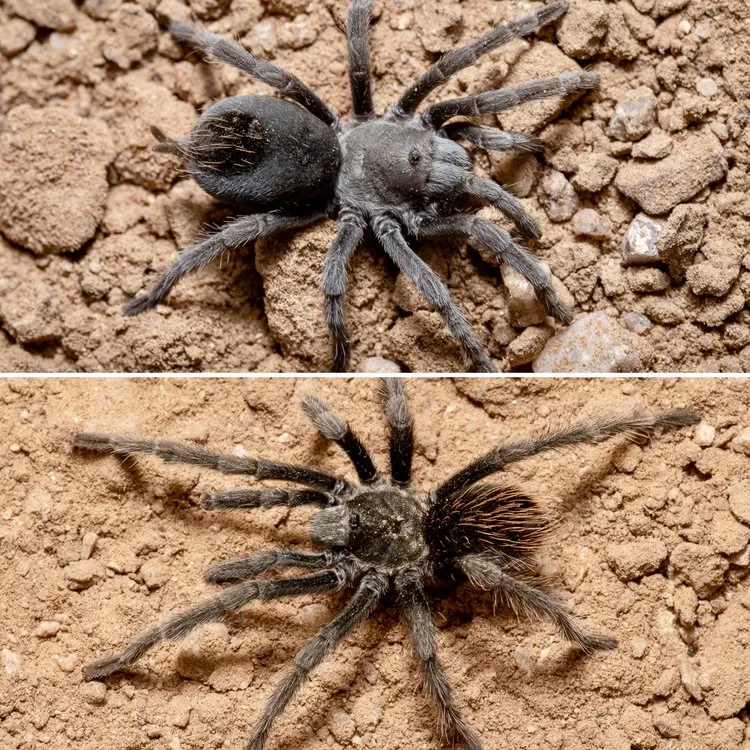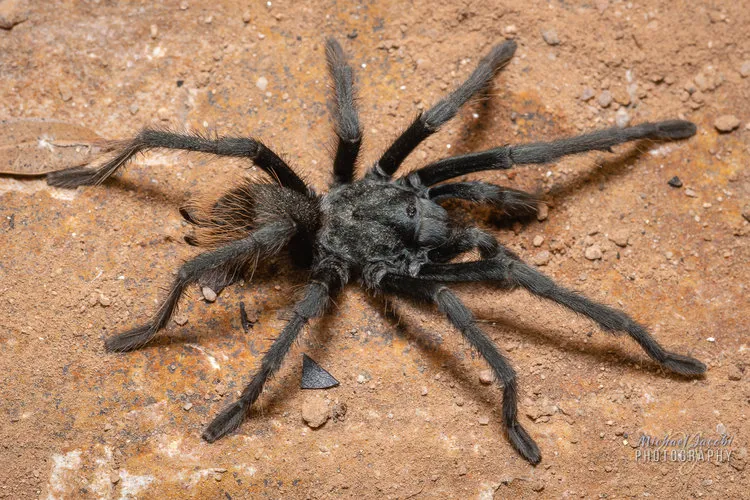What are Tarantulas?
Tarantulas are large, hairy spiders belonging to the Theraphosidae family. These impressive arachnids are found in various habitats across the globe, including the deserts of Arizona. Known for their size and sometimes intimidating appearance, tarantulas are a fascinating subject for both nature enthusiasts and those interested in the local wildlife. Unlike many other spiders, tarantulas are relatively long-lived and have unique characteristics that make them stand out. They play a crucial role in their ecosystems and are a significant part of the biodiversity in Arizona. Understanding their behavior, habitat, and the threats they face is essential for appreciating and protecting these creatures.
Where Do Tarantulas Live?
Tarantulas are adaptable creatures, but they have specific habitat preferences. In Arizona, these spiders typically reside in burrows they dig in the ground, under rocks, or in other sheltered locations. The arid and semi-arid environments of Arizona, with their sandy or loamy soils, provide ideal conditions for tarantulas to create and maintain their homes. You’ll often find them in grasslands, deserts, and even in the foothills of mountains. Their burrows are crucial for regulating body temperature and providing protection from predators and the harsh desert climate. The microclimate within these burrows is vital for their survival, allowing them to thrive in an environment that can be challenging for other species. The availability of suitable soil for burrowing and the presence of prey are key factors influencing where tarantulas choose to live in Arizona.
Arizona’s Tarantula Species

Arizona is home to several species of tarantulas, each with unique characteristics and distribution patterns. The most common species include the Arizona Blond Tarantula (Aphonopelma chalcodes) and the Desert Tarantula (Aphonopelma marxi). These species vary in size, color, and behavior. The Arizona Blond Tarantula, for example, is known for its golden-brown coloration and is a popular sight in the state’s deserts. Identifying the different species requires careful observation of physical features like size, color, and the pattern of hairs on their bodies. Understanding the specific species found in different regions of Arizona allows for better conservation efforts and appreciation of the diversity of these spiders. The availability of suitable habitats and food sources influences the distribution of each species across the state.
10 Amazing Facts About Arizona Tarantulas
Tarantulas are Venomous
Tarantulas possess venom, which they use to subdue their prey. However, their venom is generally not considered dangerous to humans. The venom is primarily designed to affect insects and other small animals. While a tarantula bite can be painful, similar to a bee sting, it rarely causes serious medical issues. The main concern for humans is the potential for allergic reactions. Their fangs are also relatively large, which can cause a deep wound, but the venom itself is not life-threatening to most people. It’s always best to seek medical attention if you experience any unusual symptoms after being bitten by any spider.
Tarantulas Shed Their Skin

Like all arthropods, tarantulas undergo a process called molting, where they shed their exoskeletons to grow. This process, also known as ecdysis, happens periodically throughout their lives. The frequency of molting depends on the spider’s age and growth rate. Before molting, the tarantula will stop eating and find a safe place to shed its old exoskeleton. The new exoskeleton is soft initially and hardens over time. During molting, the spider is especially vulnerable to predators. Molting allows tarantulas to replace damaged limbs and grow larger. The discarded exoskeletons provide valuable insights into the spider’s development and health.
Tarantulas Have Hairs That Irritate
Tarantulas have specialized hairs called urticating hairs, which they use for defense. These hairs are located on their abdomen and are released when the spider feels threatened. When the hairs come into contact with skin or eyes, they cause irritation and itching. Tarantulas use these hairs as a deterrent against predators, including birds and mammals. The irritation can last for several days and is a significant defense mechanism. Handling tarantulas should be done with caution to avoid contact with these irritating hairs. These hairs are a crucial part of the tarantula’s defense strategy, allowing them to protect themselves from potential threats in their environment.
Tarantulas Can Live a Long Time
Tarantulas are known for their long lifespans, especially females. Some species can live for over 20 years in captivity, while in the wild, they can live for 10-15 years. The male tarantulas typically have shorter lifespans, usually 5-10 years, as they often die after mating. The longevity of tarantulas is a testament to their resilience and adaptability. Factors such as diet, habitat, and the absence of predators contribute to their extended lifespans. Their long life allows them to reproduce multiple times, ensuring the continuation of their species. This extended lifespan is a remarkable feature of these fascinating arachnids.
Tarantulas are Nocturnal Hunters

Most tarantulas are nocturnal hunters, meaning they are most active during the night. They typically emerge from their burrows after sunset to hunt for food. They rely on vibrations and sensory hairs on their legs to detect prey, such as insects, other spiders, and even small vertebrates. Their nocturnal behavior helps them avoid predators and the extreme heat of the Arizona desert during the day. Their eyes are not as well-developed as those of some other spiders, so they primarily rely on their other senses for hunting. This nocturnal hunting strategy is a key adaptation that allows them to thrive in their environment.
Tarantulas are Cannibals
Cannibalism can occur among tarantulas, particularly in situations where food is scarce or during mating. Female tarantulas may sometimes eat the males after mating. Juvenile tarantulas may also cannibalize each other if resources are limited. This behavior is not unique to tarantulas and can be observed in other spider species as well. Cannibalism ensures the survival of the fittest and helps regulate the population when food resources are not sufficient. It’s a harsh reality of the natural world, but it helps to maintain the balance within the tarantula population.
Tarantulas Lay Eggs
Female tarantulas lay eggs in a silken egg sac, which they guard carefully. The number of eggs can vary depending on the species and the size of the female. The egg sac protects the eggs from predators and environmental conditions. The female typically carries the egg sac until the spiderlings hatch. Once the spiderlings hatch, they undergo several molts as they grow and develop. The mother tarantula’s role in protecting the eggs is crucial for the survival of the next generation. This reproductive strategy is common among spiders and ensures the continuation of the species.
Tarantulas are Beneficial

Tarantulas play a crucial role in their ecosystems. As predators, they help control populations of insects and other small animals. By preying on these creatures, tarantulas contribute to the balance of the food web. They also serve as a food source for larger animals, such as birds and reptiles. Their burrows also aerate the soil and provide habitat for other organisms. Their presence in the environment is a sign of a healthy ecosystem, and their conservation is essential for maintaining biodiversity. Tarantulas’ impact on the ecosystem underscores their importance in the natural world.
How to Identify Arizona Tarantulas
Identifying Arizona tarantulas requires careful observation. Pay attention to the size, color, and the presence of specific markings. Knowing the location where you found the spider can also help in identification. Common species include the Arizona Blond Tarantula and the Desert Tarantula, each with distinct characteristics. Comparing the spider to field guides or online resources can aid in accurate identification. Observing their behavior, such as whether they are defensive or more docile, can also provide clues. Being able to accurately identify these species helps in studying and conserving these fascinating creatures. Learning to identify these spiders helps with appreciation and conservation efforts.
Conservation of Tarantulas
Conservation efforts are essential for protecting tarantula populations. Habitat loss due to urbanization and agriculture poses a significant threat. Protecting their natural habitats, such as deserts and grasslands, is crucial. Promoting responsible pet ownership and discouraging the illegal collection of tarantulas helps conserve these species. Educating the public about the importance of tarantulas and their role in the ecosystem is vital. Supporting research and monitoring programs can provide valuable insights into their populations and behaviors. Conservation is a collaborative effort, involving scientists, policymakers, and the public. By taking these steps, we can ensure the survival of these incredible creatures for future generations.
